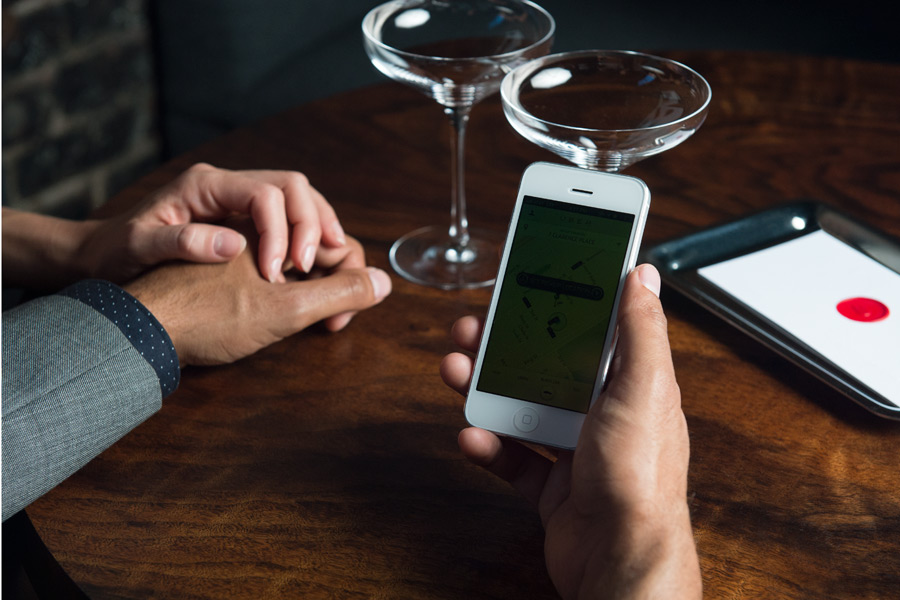It’s sweeping the country, from the streets of San Francisco to the rural lanes of Idaho, shaking up traditional customs and transforming the way people travel.
And now it’s destined for Big Sky Country.
It’s called Uber.
Next month Uber will celebrate its fifth anniversary as the pioneering ride-sharing company that connects riders and drivers through a mobile app on smartphones. The ride-on-demand platform is not the only one — Lyft and Sidecar are among the growing list of similar services following Uber’s lead — but Uber is certainly the most successful and well established in mainstream America, operating in more than 160 cities nationwide.
Montana has opened the doors to ride-sharing services such as Uber’s after lawmakers approved a bill that repealed state restrictions that allowed existing taxi service providers to block new competitors. The bill, which Gov. Steve Bullock signed into law last week, also added a new class of license for app-based ride-share companies to provide regulated services.
Proponents of ride-sharing say it fills the gaps in places where taxi services are slim and can cut down on drunk driving. Opponents, including taxi service providers, frequently raise safety concerns and claim there are not enough regulations for firms like Uber.
The Public Service Commission, which oversees commercial motor carriers in the state, is in the process of drawing up the proposed rules for ride-sharing. After a public comment period, PSC officials say the applications can go out July 1.
Uber spokeswoman Kate Downen said the company does not have any immediate plans to launch in Montana but it looks forward to exploring opportunities. The site is also accepting driver applications.
“We know that Montanans want ride-sharing. We’ve heard from a lot of folks,” she told the Beacon. “We also know people are opening the app in Montana and looking for Uber. There is a demand.”
So what exactly is ride-sharing?
Nearly two-thirds of Americans own a smartphone, up from 35 percent in the spring of 2011, according to the latest survey by the Pew Research Center. The same study found many smartphone users are accustomed to using their devices for everyday tasks.
With that in mind, Uber was founded on a simple yet groundbreaking idea: what if any driver with a vehicle could provide rides to fellow residents?
When Uber establishes itself in a city or state, it creates a marketplace with independent drivers. Uber does not own cars, nor does it employ drivers. Instead, registered drivers log onto the app and make themselves available whenever they want.
People seeking a ride log into the mobile app, provide their location and where they want to go. The screen displays the Uber drivers in the area. Payment is done solely through the app, eliminating the need for cash.
Both drivers and riders have user profiles, which become a valuable reference for both parties. Riders rate drivers, and vice versa, on a scale of one to five stars. Riders who are reported to be abusive toward drivers can lose access to the system. Riders can also turn down drivers after reviewing their profiles.
Drivers must apply for an independent contractor license to work in Uber’s system. All drivers must undergo background checks that scan county, federal and multi-state records going back seven years. Among the list of criteria, drivers are prohibited if they have had a DUI or other drug related driving violation in the past seven years, as well as reckless driving offenses or a fatal accident. Uber says it regularly checks its drivers’ motor vehicle records to ensure ongoing safe driving.
Montana’s new law requires any “transportation network company” such as Uber to carry significant commercial liability insurance. Drivers are required to have primary motor vehicle liability insurance.
Taxi service providers have become vocal critics of Uber and other ride-sharing companies, claiming the platforms have too much power setting their own fares.
Uber does set its own fares through a dynamic pricing model that includes mileage, time of day and supply and demand. Drivers keep 80 percent of gross fares, while Uber keeps the other 20 percent.
Rep. Ellie Hill, D-Missoula, one of the bill’s sponsors, said the advent of ride-sharing in Montana will improve the opportunities for riders.
“(The taxi industry has) had a good old-fashioned monopoly going here in Montana,” Hill told the Associated Press. “Montana has long said we don’t protect monopolies.”
